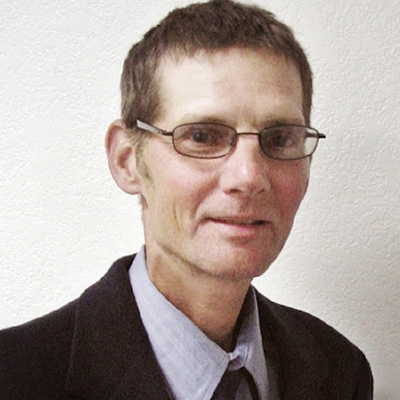Sixty-one years ago, the Bronx-born Lalli was in a real war. A little more than a year into his Army service, Lalli was assigned to a destroyer within the U.S. Navy task force, carrying then-Maj. Gen. George S. Patton Jr.'s Western Task Force to North Africa.
Getting the quiet, dignified and humble Lalli to talk is not easy. He has two Purple Hearts--for wounds he took in battle--and a Silver Star, the third-highest military award, designated solely for heroism in combat.
Lalli is pleasant and engaging. But he'd rather talk about the Purple Heart Plaza, which, after two years, has found a home in Pima County's developing Paseo del los Arboles Commemorative Park at 3500 W. River Road.
Anything else amounts to "war stories," he says, the kind that he fears--mistakenly--will be taken as boasts.
It was nothing easy. He and his fellow troops faced Germany's legendary Field Marshal Erwin Rommel, the Desert Fox, and his heavily equipped Afrika Korps.
It was in Tunisia, at the battle at Kasserine Pass, where Rommel's skill and strength was shown to Gen. Dwight Eisenhower and fighting men like Lalli.
"We took a beating," he says of the February 1943 battle for what historians described as the two-mile wide gap in the Grand Dorsal Mountains.
The battle, and the loss, are universally looked upon as a stunning defeat for the allies brought on by, according to reports of Eisenhower's account, a violation of every tactical principle. Kasserine was such a stark defeat that it served as a study in military schools of what not to do. It also brought on the change of command from Maj. Gen. Lloyd Fredendall to Patton that put Rommel on the run.
Away from the history books and on the ground, 1,000 American troops were killed. More than 1,000 were missing. Lalli took a shot in his leg. He bandaged himself up and, as he was headed back for an aid station, he was told to take some of the German prisoners with him.
"Take these 12 with you," he remembers being told.
Lalli smiles and wants to change the subject away from the Army, away from World War II.
His parents emigrated from Napoli and Lalli, and his brother was among the huge number of Italian-Americans to serve the United States in the war against the German, Italian and Japanese Axis.
And it was on Italian and Sicilian soil that Lalli served the rest of his time in more brutal combat, for which he earned his other prestigious commendations. His humility and desire to not pull attention away from the project keeps him from talking about his valor.
He had relatives in Italy, but Lalli never returned.
"I was 13 months here in the states (including at Fort Bragg, N.C.), 13 months overseas and 13 months back here," Lalli says. "Why go back there to those towns? It would just bring back those memories."
Painful memories.
Lalli would rather smile about the work to place Purple Heart Plaza at the emerging, 14-acre county park that also is the location for the Pima County Natural Resources, Parks and Recreation Department.
This project began two years ago, with the help of Dan Felix, then the director of Tucson's Parks and Recreation. Felix, who died in January of cancer, was working with Lalli and the Purple Heart Plaza Board of Directors to put a monument at Purple Heart Park in Rita Ranch.
As logical as it was, conflict arose. Neighborhood leaders wanted to yield none of the required space. City bureaucrats and politicians lacked Felix's trademark ability to forge compromise.
The issue was being manipulated, and it threatened to become a political ramp, so Lalli, chairman of the Purple Heart Plaza Board of Directors, and his colleagues backed off. Finally, they told Acting Parks Director Bob Martin, in a Nov. 20 letter, that they would move on.
Disagreement and contention, they said, overshadowed "our vision of the plaza as a place of peace, healing and education."
Martin did not respond to two queries from The Weekly.
County Administrator Chuck Huckelberry, Republican Supervisor Ray Carroll and other county officials are eager to have to Purple Heart Plaza at the new county park, which is on a former gravel operation purchased with county flood control money after 1983 floods.
"I serve at their pleasure," Carroll said. "I have never worked with a more sincere group. They made a terrific sacrifice."
Huckelberry is not worried about costs to the county, because the design and contouring work for the park must be done anyway.
Designed by a Korean War veteran, the Purple Heart Plaza will be 120 feet long and 60 feet wide. The centerpiece of the tree-lined plaza will be a large replica of the Purple Heart medallion. Five white pillars will represent the five armed forces behind the medallion. Behind the pillars will fly the U.S., Arizona, Purple Heart, Prisoner of War and Missing in Action flags. At the other end will be a ramada explaining the citation and the different wars.
"We are so fortunate to have the county," said Lalli, who moved to Tucson in 1954 and operated a boot and shoe shop on East Speedway Boulevard. "They welcomed us. They said, 'We greet you.'
"We want this to be a place to help educate and to be a quiet place. We need to help these fellas coming home from Iraq to our bases here. Tears come to my eyes when I see those boys," said Lalli, who assists veterans at the Veteran Affairs campus on the southside.
A timeline for construction has not been established. The county has flood control work to complete to ensure major storm runoff will be accommodated.











